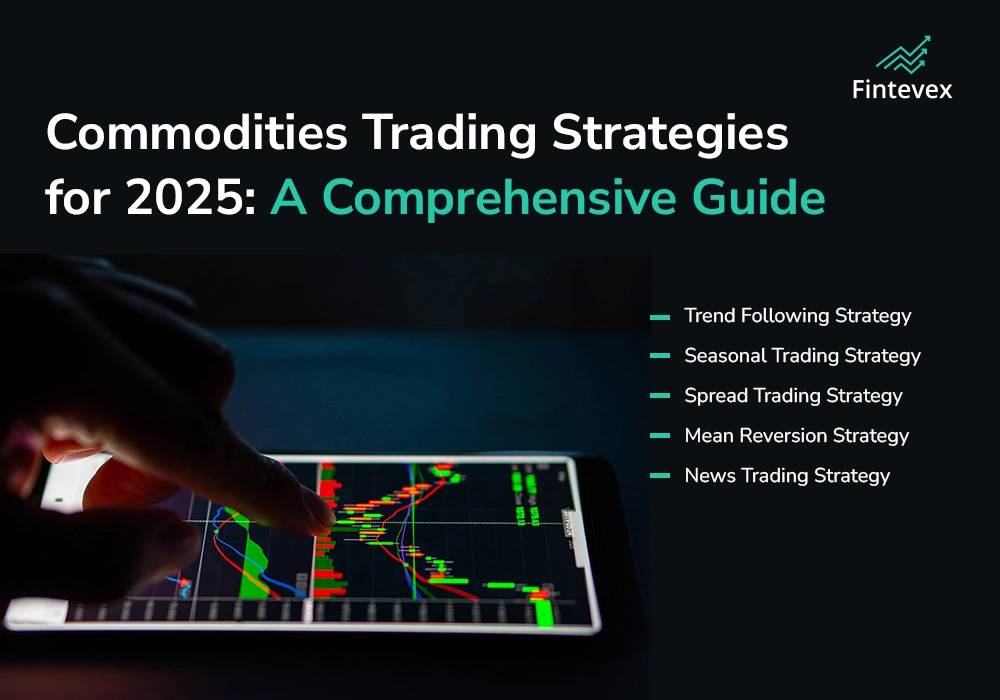Comprised of a plethora of goods essential for the agriculture, production, and energy sectors, the commodities market is revered as one of the most complex spokes of the global economy.
As we march towards 2025, commodities continues to remain a crucial asset class for investors and traders alike for the potential benefits that can be availed in using them for portfolio diversification and inflation hedging. Identifying the different classes of commodities along with their market tools is crucial for effective navigation in this sector.

Understanding Commodities and Their Importance!
Commodities are defined as primary goods or raw materials that can be traded or sold worldwide. Unlike bonds and stocks, commodities are not dependent on any company’s performance or prospects because they contain intrinsic value through their real world features and demand around the globe. These economic assets affect and drive core capital development ranging from industrial expansion energy and food inflation.
Since the Goods and Services Tax (GST) bill was implemented in India, there has been much speculation revolving the four major categories of commodities which include metals, energy, agriculture and livestock. Each segment has unique investment opportunities along with supply demand factors.
Energy Commodities: Powering the Global Economy
Energy commodities are some of the most bought and sold products globally due to their importance in industrial, transport, and household energy consumption. These commodities are greatly affected by wars, government actions, and the progress made towards renewable energy technologies.
Crude Oil
Arguably the most actively traded commodity is crude oil. It is made up of various grades, with Brent Crude and West Texas Intermediate (WTI) marking standard prices. Industrial output, global conflicts, and OPEC+ activities dictate the demand for oil. Gasoline and diesel fuel are also important in international business trade.
Natural Gas
Electricity production, heating requirements, and industrial uses all require natural gas. Many countries are spending money on LNG facilities due to the increasing global competition in the liquefied natural gas (LNG) market. The natural gas price is influenced by the temperature, output, and export agreements.
Energy
Market dynamics are shifting with the movement towards cleaner energy being put to action. The more aggressive government policies of the world are making biofuels, carbon credits, and hydrogen more marketable. Additionally, investing in polysilicon for solar panel production and rare earth elements for wind turbine construction is becoming more common.
Metals Commodities: An Indispensable Part of the Industry
Their unique properties make metals useful in construction, manufacturing, and even technological advancements. They are divided into two main categories: precious metals and industrial metals.
Precious Metals
Silver, platinum, and gold are valuable not just for their aesthetic creations, but also for their role in electronics and industrial purposes. During turbulent times, gold is a favorite investment option, while silver is also used in industries like solar panels and electronics in addition to being used as an investment and jewelry, which makes it a versatile precious metal.
Industrial Metals
Aluminum, copper, lithium, nickel, zinc, and lithium are crucial in the making of infrastructure, consumer electronics, and electric vehicles (EV). Copper is popularly known as the commodity of the leading economic indicators since it is used in construction and electrical wiring. The demand for lithium and nickel is increasing as we shift towards battery-powered technology and the age of EVs.
Agricultural Commodities: Sustaining Humanity
Agricultural commodities encompass grains, soft commodities, and tropical products. They underpin the global supply of food, and their output is subject to climate, geopolitical landscapes, and growing population.
Grains and Oilseeds
The most commonly traded crops are wheat, corn, rice, and soybeans. Their prices are influenced by a myriad of factors such as weather changes, supply chain issues, and the political climate concerning food safety policies. Additionally, soybeans and corn are important for producing biofuels, thus connecting them to the energy sector.
Soft Commodities
Sugar, cotton, coffee, and cocoa fall into this category. These commodities are typically produced within certain climatic boundaries and are affected by weather extremes, labor problems, and even trade regulations. The same case applies to the coffee market where crop yields in Brazil and Vietnam can sway the coffee prices as those two countries are the largest coffee producers.
Tropical Products
Cocoa, palm oil, and rubber are vital to many sectors including the food, cosmetics, and automotive industries. The Deforestation and environmental concerns surrounding sustainable palm use has made palm oil, a common ingredient in consumer goods, a more scrutinized commodity. The demand for sustainable sourcing practices is shaping the future of these commodities.

Livestock Commodities: The Backbone of the Meat Industry
The livestock commodities under consideration include live cattle, feeder cattle, and lean hogs. The demand for livestock and the corresponding meat varies due to consumer buying patterns, feed prices, and diseases that disrupt supply chains make these markets unstable. Newer trends in consuming plant protein and lab-grown meat is also affecting the market of livestock commodities.
Investing In Commodities Markets – Investment Opportunities
Investing in a commodity market might be a good idea. It could include past and future investments, as well as shares and stocks from companies associated in producing commodities, exchange-traded funds, options, futures contracts, and other derivatives.
Direct Commodity
Gold and silver bullion and agricultural products can be invested in, but storage and transportation could be an issue.
Options & Futures
Investors are permitted to speculate financial asset’s price movements through futures contracts, which also can be used without taking physical delivery of asset. Futures contracts are a common thing for traders and hedgers who have the need to control risk.
Mutual and ETFs
Investing in ETFs is preferred because mutual funds and distinct ETFs that track agricultural, oil, or gold indices do not require surrendering to complexities of futures trade.
Stocks of Producers
Investors get exposed to new opportunities that stem from oil and mineral producing companies, and agricultural related firms, allowing investment on direct and indirect strategies for commodities price movements. The financial results these companies received are heavily influenced by the price changes of the raw materials.
In Summary:
Offering choices for investment in energy, metals, dwelling stocks, and farming, the commodity market continues to be an important and essential part of international finances. Supply and demand for each type of a commodity has its characteristics which are affected by economic growth, new technologies, and climate change.
Informed decisions for traders and investors stem from commodities and their market drivers. In 2025, commodities serve as an important asset class for portfolio diversification, inflation hedges, or long-term growth.
















